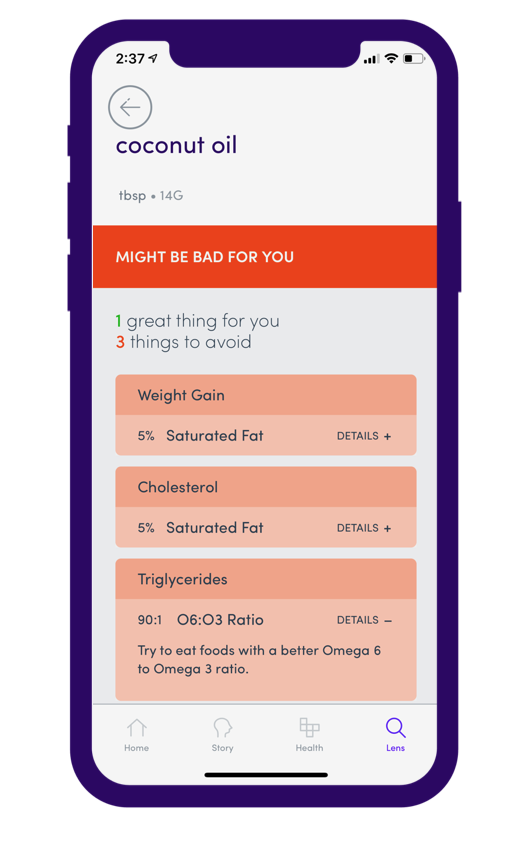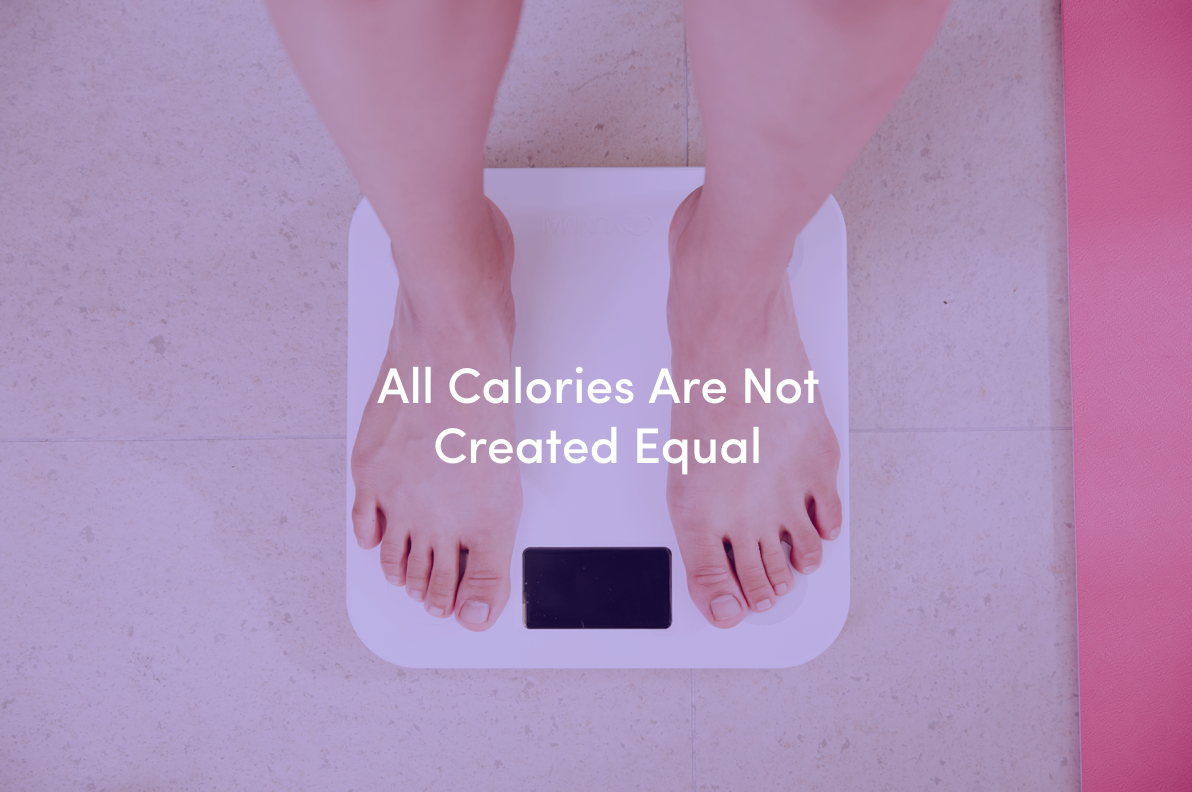A recent article in The Economist called for the ‘Death of the Calorie’. No one can deny that a significant calorie deficit will result in weight loss. However, the article rightly touches upon how our society has oversimplified the concept of calories. There are other factors at play here like our genes, gut microbiomes, sleep patterns, metabolism, the way your food is cooked and more. Going beyond calorie counting and approaching nutrition and weight loss via a much more holistic approach, that takes into consideration other factors like your genetics, can prove much more effective and healthier for you in the long run.
A Brief History of Calories
Wilbur Olin Atwater, an American chemist laid down the groundwork for the science of nutrition. He was the first to prove that the human body stores up unused energy. Atwater burned thousands of food items to arrive at the average values of 4,4,9 for the Atwater system - used to calculate calories on food labels even today.
The 4-4-9 system represents the average conversion factor values for macros to calories. For example, if you know the grams of individual macro components you can derive the total calories using this formula:
Protein grams x 4 = Calories from Protein
Carbohydrate grams x 4 = Calories from Carbs
Fat grams x 9 = Calories from Fat
However, treating all calories to be the same makes no sense biochemically. The body processes fats, carbohydrates, and proteins completely differently, and those differences matter. Calories at the end of the day is just a unit of measure of energy, and not all calories are created equal. Considering just the calorific value also doesn’t tell you a lot about how quickly this energy is used up by your body. Other elements like the fiber content and how you chew your food also matters.
The kind of macros you consume also influence the calories you expend. Your body uses up energy digesting and absorbing nutrients from the food you eat. Protein has a significantly greater thermic effect and you body will expend significantly more calories compared to eating the same number of calories from other macros.
Macro Composition Matters!
When we eat, food components set off complex processes in the liver and endocrine system, and then it moves into the gut where trillions of bacteria living in symbiosis help digest it. Our body needs certain amounts of macronutrients - carbs, proteins and fats to function properly.
We all are different in processing different macronutrients in terms of gaining weight or insulin response. Our genes play a role in these responses. Use Gini to see your gene adjusted macros once you connect your DNA data.

Carbohydrates
Carbs come in various forms, so the key is in finding the right kind of carbs to eat. They are made up of three components: fiber, starch and sugar. Sugar is a simple carb and fiber and starch are complex.

Image sourced from here.
The processed food we eat like baked treats, cookies, soda and most breakfast cereals are rich in simple carbs that can spike your blood glucose levels. If your body doesn’t use up this free glucose, it triggers insulin production and this stimulates the muscle and fat cells to take in glucose.
A diet rich in complex carbs is going to be much more beneficial for you. Carbohydrates especially in non-processed food come along with fiber and starch. This reduces the time it takes for your blood glucose levels to spike, making for a much more gradual absorption of energy. There are also genetic factors at play here when it comes to weight loss. Based on the variants of PLIN1 gene you possess, you have to ensure that you eat more than 144 grams of complex carbs/day to lose weight.
Glycemic Index
We talked about how different foods can spike your blood sugar levels in different ways. This brings us to the concept of glycemic index of foods. Glycemic index goes from 0 to 100 and reflects how quickly these foods increase blood glucose levels when compared to pure glucose or sugar. Food with a higher GI, will stimulate an insulin response much more quickly than that of a low GI food. Foods low in GI will allow your body time to utilise the glucose in the bloodstream, before it reaches a high enough level for an insulin response.
If you have an increased risk of diabetes or insulin sensitivity, it is recommended that you avoid foods having a glycemic index over 55. You can see this risk on Gini, and use the food lens to identify high GI foods.

Proteins
Proteins plays a crucial role in your body and function as the building blocks for your bones, muscles, cartilage, skin and blood. They influence body weight via four factors: satiety, thermogenesis, energy efficiency and body composition. Depending upon genetics (Genes FTO and TCF7L2), you might lose weight on a high protein diet.
As a side note, satiety is also influenced by genetics. Gene FTO governs the creation of appetite stimulating hormone ghrelin and you are likely to feel more hungry or fuller after a meal depending upon the variant you possess. Protein impacts satiety and you feel fuller after a meal consisting of proteins when compared to equal amounts of carbs or fat.
Fats
It’s crucial to moderate your consumption of fats because all fats are high in calories. Here again not all fats are created equal.
Our body needs small amounts of what are termed as “good fats” to maintain bodily functions and prevents diseases. For example, some vitamins dissolve into your bloodstream in the presence of fats. Dietary fat, also known as fatty acids, can be found in foods from both plants and animals.
Saturated fat and trans fat — have both been identified as potentially harmful to your health. The jury is still out on saturated fat but the common advice is to limit intake. You can customize that based on your genes. Trans Fat however can raise LDL cholesterol and increases the risk of inflammation in the body.
Polyunsaturated fats are known as “essential fats” because our bodies cannot make it on our own and need to source it from the food that we consume. It includes both Omega 6 and Omega 3 fatty acids - and they are crucial for brain function and cell growth. However, most western diets have high Omega6 content and you have to be mindful of Omega 6 to Omega 3 ratios.
Monounsaturated fats are the healthiest of the fats and can be found in avocados, olive oil and nuts. Depending upon your genes, you might have to have more of monounsaturated fats to avoid weight gain. These are the gene adjusted values for fats that you can see on Gini.

Gini also allows you to locate foods with high Omega 6:Omega 3 ratios so that you can limit or avoid them. Simply search for a food and the app will overlay your genetic risks on top of it under Triglycerides.

Meal Timing
Your meal timing is yet another factor that determines how your body reacts to calories. It is common wisdom to eat breakfast early but that rule of thumb doesn’t apply to everyone.
If you have an elevated genetic risk, you are likely to have high fasting blood glucose levels because of high melatonin levels. Late dinners especially when you have a significantly impaired glucose tolerance is known to be associated with weight gain.
In these cases of elevated risk, it would do you good to consider a late breakfast and early dinner. You can also consider intermittent fasting or time restricted eating as a way to manage your weight. Consult with a physician before you try fasting for extended periods of time, especially if you already suffer from diabetes.
All in all, approaching weight loss taking into consideration all of these above factors, on top of calorific value can potentially help you with weight loss. Diets and calorie counting doesn't work for all of us when it comes to losing or gaining weight because it is incredibly complex even without factoring in human behaviour. Understanding your macros, your metabolism and your genetic predispositions can help you chart a better diet plan with a higher chance of success.




